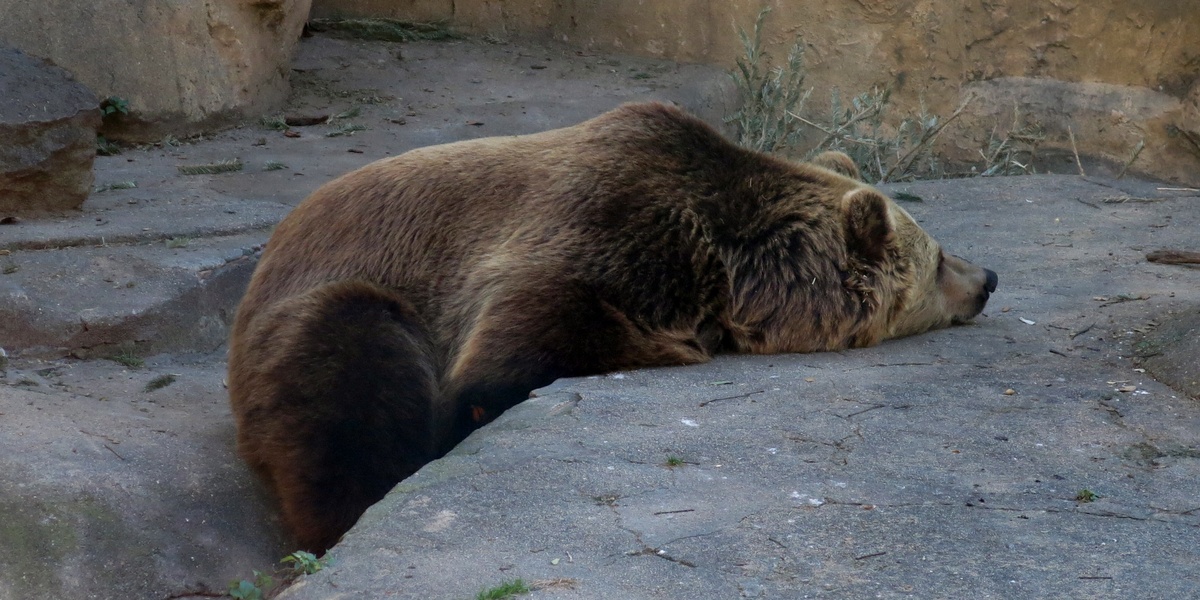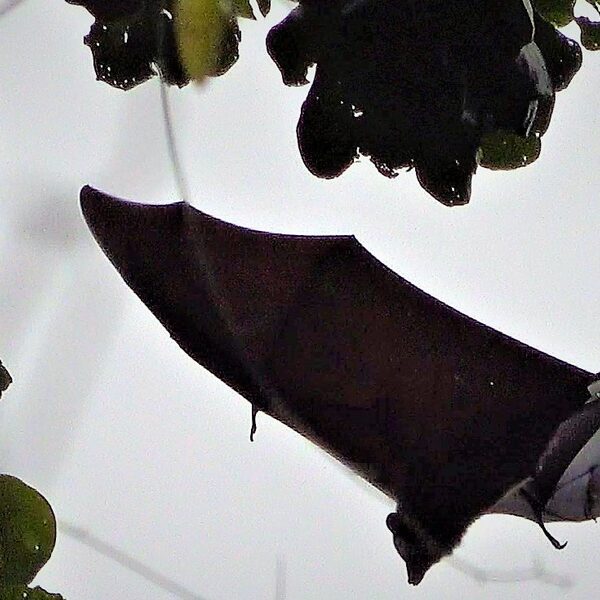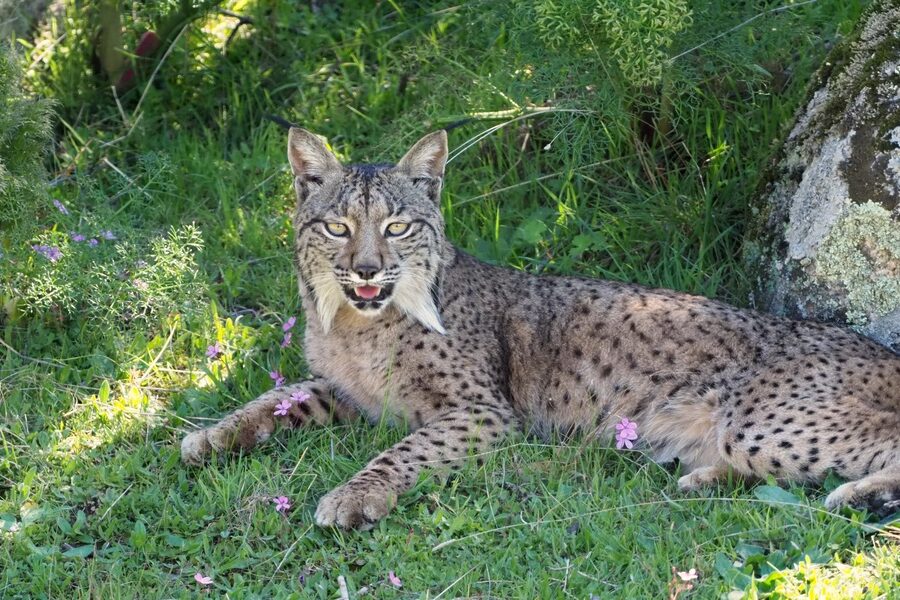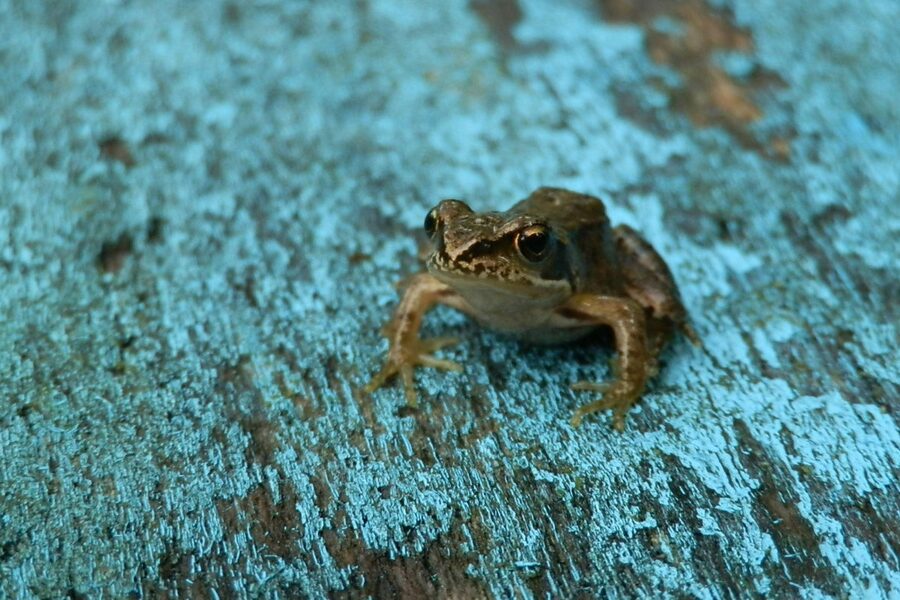Albania sits where Mediterranean coast meets rugged mountains and wetlands, creating a mosaic of habitats that support birds, mammals, fish and amphibians. These varied environments mean the country’s wildlife can be surprising: river species, mountain endemics and coastal migrants all share a relatively small landscape.
There are 58 Animals of Albania, ranging from the Adriatic Sturgeon to the Yellow-bellied Toad; each entry is organized with Scientific name,Taxon,IUCN status so you can quickly see identity, classification and conservation concern. That span—from large river fish to tiny amphibians—illustrates Albania’s ecological range, and you’ll find details below.
Which species on the list are most at risk?
Look at the IUCN status column to spot threatened species (Vulnerable, Endangered, Critically Endangered). Species like large migratory fish and habitat-specialist amphibians often face the highest pressures due to habitat loss, barriers to movement and water pollution, so prioritize those when assessing conservation needs.
How can I use this list for fieldwork or research?
Use the Scientific name for precise identification, the Taxon to group similar organisms, and the IUCN status to prioritize targets; together these columns help plan surveys, focus conservation actions, or cross-reference with regional databases and protected-area maps.
Animals of Albania
| Name | Scientific name | Taxon | IUCN status |
|---|---|---|---|
| Brown Bear | Ursus arctos | Mammal | Least Concern |
| Gray Wolf | Canis lupus | Mammal | Least Concern |
| Balkan Lynx | Lynx lynx balcanicus | Mammal | Critically Endangered |
| Eurasian Otter | Lutra lutra | Mammal | Near Threatened |
| Wild Boar | Sus scrofa | Mammal | Least Concern |
| Chamois | Rupicapra rupicapra | Mammal | Least Concern |
| Red Fox | Vulpes vulpes | Mammal | Least Concern |
| Golden Jackal | Canis aureus | Mammal | Least Concern |
| Roe Deer | Capreolus capreolus | Mammal | Least Concern |
| Mediterranean Monk Seal | Monachus monachus | Mammal | Endangered |
| European Pine Marten | Martes martes | Mammal | Least Concern |
| European Badger | Meles meles | Mammal | Least Concern |
| Lesser Horseshoe Bat | Rhinolophus hipposideros | Mammal | Least Concern |
| Golden Eagle | Aquila chrysaetos | Bird | Least Concern |
| Dalmatian Pelican | Pelecanus crispus | Bird | Near Threatened |
| Griffon Vulture | Gyps fulvus | Bird | Least Concern |
| Egyptian Vulture | Neophron percnopterus | Bird | Endangered |
| Pygmy Cormorant | Microcarbo pygmaeus | Bird | Least Concern |
| Rock Partridge | Alectoris graeca | Bird | Least Concern |
| Eurasian Eagle-Owl | Bubo bubo | Bird | Least Concern |
| Greater Flamingo | Phoenicopterus roseus | Bird | Least Concern |
| Black-winged Stilt | Himantopus himantopus | Bird | Least Concern |
| White Stork | Ciconia ciconia | Bird | Least Concern |
| Eurasian Capercaillie | Tetrao urogallus | Bird | Least Concern |
| Common Kingfisher | Alcedo atthis | Bird | Least Concern |
| European Bee-eater | Merops apiaster | Bird | Least Concern |
| Hoopoe | Upupa epops | Bird | Least Concern |
| Alpine Chough | Pyrrhocorax graculus | Bird | Least Concern |
| Loggerhead Sea Turtle | Caretta caretta | Reptile | Vulnerable |
| Hermann’s Tortoise | Testudo hermanni | Reptile | Near Threatened |
| Nose-horned Viper | Vipera ammodytes | Reptile | Least Concern |
| Balkan Green Lizard | Lacerta trilineata | Reptile | Least Concern |
| European Glass Lizard | Pseudopus apodus | Reptile | Least Concern |
| Balkan Whip Snake | Hierophis gemonensis | Reptile | Least Concern |
| Dice Snake | Natrix tessellata | Reptile | Least Concern |
| European Pond Turtle | Emys orbicularis | Reptile | Near Threatened |
| Dalmatian Algyroides | Algyroides nigropunctatus | Reptile | Least Concern |
| Meadow Viper | Vipera ursinii | Reptile | Vulnerable |
| Fire Salamander | Salamandra salamandra | Amphibian | Least Concern |
| Albanian Water Frog | Pelophylax shqipericus | Amphibian | Endangered |
| European Tree Frog | Hyla arborea | Amphibian | Least Concern |
| Yellow-bellied Toad | Bombina variegata | Amphibian | Least Concern |
| Agile Frog | Rana dalmatina | Amphibian | Least Concern |
| Smooth Newt | Lissotriton vulgaris | Amphibian | Least Concern |
| Ohrid Trout | Salmo letnica | Fish | Vulnerable |
| European Eel | Anguilla anguilla | Fish | Critically Endangered |
| Wels Catfish | Silurus glanis | Fish | Least Concern |
| Adriatic Sturgeon | Acipenser naccarii | Fish | Critically Endangered |
| Shkodra Roach | Pachychilon pictum | Fish | Least Concern |
| Dentex | Dentex dentex | Fish | Vulnerable |
| Gilt-head Bream | Sparus aurata | Fish | Least Concern |
| Apollo Butterfly | Parnassius apollo | Insect | Near Threatened |
| Southern Festoon | Zerynthia polyxena | Insect | Not Evaluated |
| European Mantis | Mantis religiosa | Insect | Least Concern |
| Stag Beetle | Lucanus cervus | Insect | Near Threatened |
| Noble Pen Shell | Pinna nobilis | Marine Invertebrate | Critically Endangered |
| Common Octopus | Octopus vulgaris | Marine Invertebrate | Least Concern |
| Mediterranean Spiny Lobster | Palinurus elephas | Marine Invertebrate | Vulnerable |
Images and Descriptions

Brown Bear
Found in the remote mountains of the Albanian Alps and southern ranges, this large carnivore is a symbol of Albania’s wilderness. They are omnivores, feeding on berries, roots, and small animals, and generally avoid human contact.
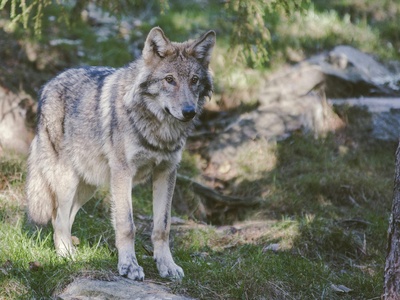
Gray Wolf
Thriving in Albania’s rugged, forested highlands, gray wolves live and hunt in packs. They are apex predators crucial for ecosystem balance, primarily preying on wild boar and roe deer. Their howls can sometimes be heard echoing through the valleys.
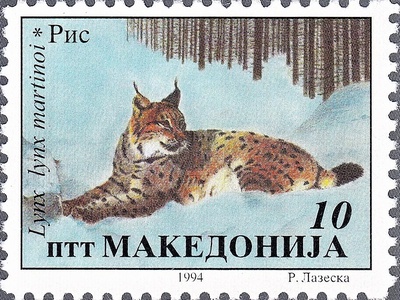
Balkan Lynx
One of the rarest cats on Earth, with fewer than 50 individuals remaining. This elusive subspecies clings to survival in the remote mountains of eastern Albania, like the Shebenik-Jabllanicë National Park, preying on roe deer and chamois.
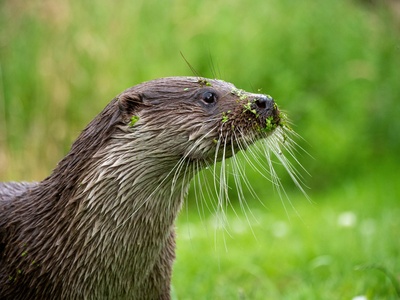
Eurasian Otter
This playful, semi-aquatic mammal inhabits clean rivers, lakes, and coastal lagoons like Karavasta and Butrint. Its presence is a key indicator of a healthy aquatic ecosystem, as it primarily feeds on fish and crustaceans.
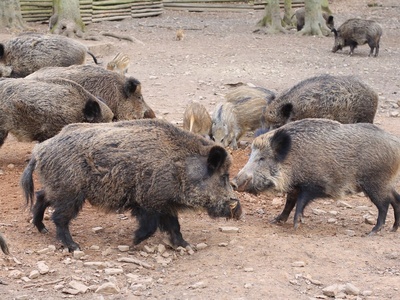
Wild Boar
Abundant throughout Albania’s forests, scrublands, and even agricultural areas. These powerful omnivores use their snouts to root for food and can be a common sight, especially at dusk. They are a key prey species for wolves.
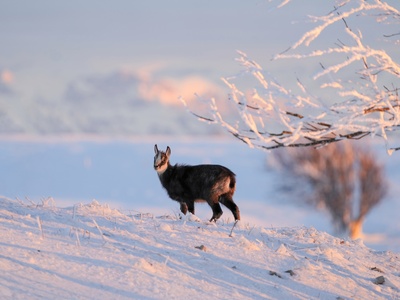
Chamois
A species of goat-antelope perfectly adapted to steep, rocky terrain. Chamois are found in the high altitudes of the Albanian Alps and other mountain ranges, known for their incredible agility and speed on treacherous cliffs.

Red Fox
Highly adaptable and widespread, the red fox can be found in nearly every habitat in Albania, from deep forests to the outskirts of towns. They are opportunistic omnivores with a diet ranging from rodents to fruits and insects.
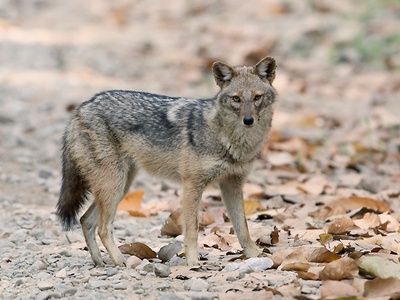
Golden Jackal
This medium-sized canine has been expanding its range across Albania, particularly in coastal lowlands and wetlands. Often mistaken for a small wolf, the golden jackal is an adaptable omnivore that scavenges and hunts small animals.

Roe Deer
A small, elegant deer found in woodlands and mixed forests across the country. Roe deer are most active at dawn and dusk, feeding on buds, leaves, and berries. They are a primary food source for predators like the wolf and lynx.
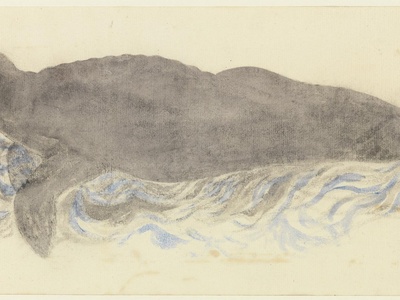
Mediterranean Monk Seal
One of the world’s most endangered marine mammals. Sightings are extremely rare, but they occur along the remote, cave-filled coastline of the Karaburun Peninsula, which serves as a critical habitat for this small, fragile population.
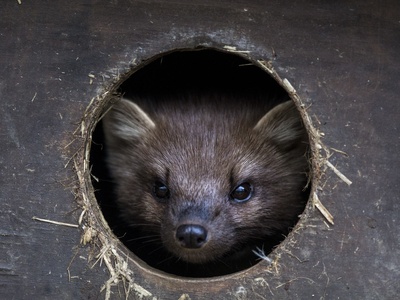
European Pine Marten
An agile, cat-sized carnivore living in forested areas across Albania. It’s an excellent climber, hunting squirrels and birds in trees, and is known for its rich, brown fur and a creamy yellow “bib” on its throat.
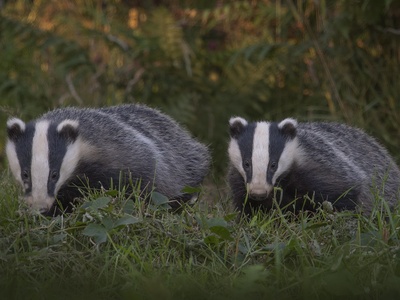
European Badger
A powerful, stout-bodied mammal recognized by its distinctive black and white striped face. Badgers live in social groups in underground burrows called setts and are common in Albania’s woodlands, pastures, and scrublands.

Lesser Horseshoe Bat
One of the smallest bat species in Europe. It is widespread in Albania, roosting in caves, mines, and old buildings. It hunts for small insects like moths and mosquitoes in wooded areas and near water.

Golden Eagle
Albania’s national symbol, this majestic bird of prey soars over remote mountains and open highlands. It builds large nests on cliffs or in tall trees and hunts mammals like hares and foxes, embodying the country’s wild spirit.
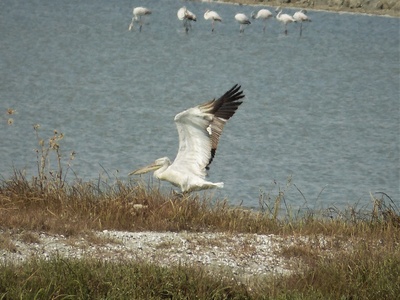
Dalmatian Pelican
The Karavasta Lagoon is a crucial breeding ground for this magnificent bird, one of the world’s largest pelicans. Its massive bill and shaggy crest make it unmistakable as it fishes in the shallow coastal waters.

Griffon Vulture
This large scavenger soars on thermal updrafts over southern Albania’s mountains, searching for carcasses. With a wingspan of up to 2.8 meters, it plays a vital role as a natural clean-up crew, though its population is vulnerable locally.

Egyptian Vulture
A small, intelligent vulture known for using tools to break open eggs. This migratory species returns to Albania to breed in rocky gorges and cliffs, but faces severe threats across its range, making local conservation efforts critical.

Pygmy Cormorant
Smaller than its more common relative, the pygmy cormorant thrives in Albania’s wetlands, particularly Lake Shkodra and the Buna River. They nest in colonies in dense reed beds and are skilled at diving for small fish.
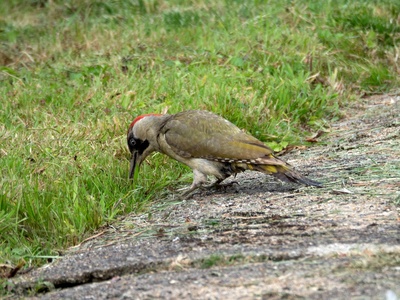
Rock Partridge
A game bird perfectly camouflaged for its habitat. It lives on bare, rocky mountain slopes above the treeline across Albania. Its distinctive cackling call is a characteristic sound of the country’s high-altitude landscapes.

Eurasian Eagle-Owl
One of the world’s largest and most powerful owls, identifiable by its large size, prominent ear tufts, and deep hooting call. It inhabits rocky outcrops, cliffs, and open forests, hunting a wide variety of prey at night.
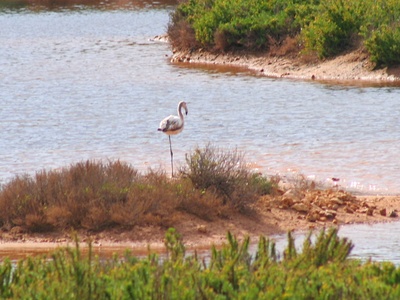
Greater Flamingo
These iconic pink birds are a spectacular sight in Albania’s coastal lagoons, particularly in Narta and Karavasta. They use their specialized beaks to filter-feed on brine shrimp and algae, which gives their feathers their vibrant color.
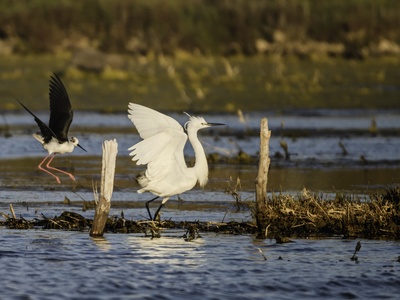
Black-winged Stilt
An elegant wading bird with incredibly long pink legs, a slender black bill, and striking black and white plumage. It is commonly found foraging in the shallow waters of coastal wetlands and salt pans throughout Albania.
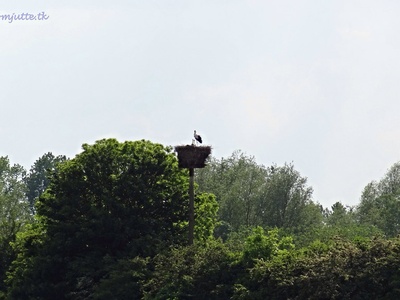
White Stork
A large, famous migratory bird often associated with good luck. White storks are seen in wetlands and farmlands across Albania, where they forage for frogs and insects. Many nest on rooftops and purpose-built platforms in rural villages.
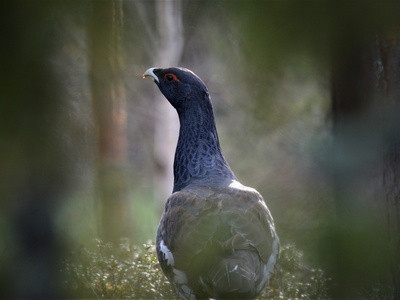
Eurasian Capercaillie
The world’s largest grouse species, found in the mature coniferous forests of northern Albania. Males are known for their spectacular lekking display, a courtship ritual involving guttural calls and fanned tail feathers to attract females.
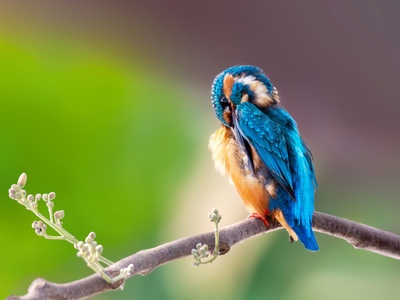
Common Kingfisher
A flash of iridescent blue and orange, this small bird is found along clean rivers, streams, and lakes throughout Albania. It dives with incredible speed to catch small fish, which it typically stuns before swallowing whole.

European Bee-eater
A stunningly colorful migratory bird that nests in colonies in sandy banks along rivers. As its name suggests, it expertly catches bees, wasps, and other flying insects in mid-air, a common sight in Albania’s open countryside.
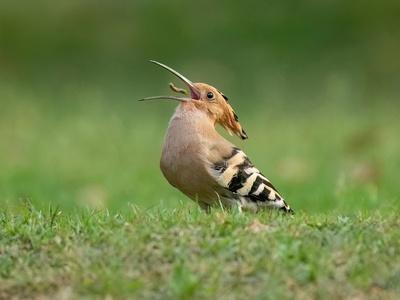
Hoopoe
Instantly recognizable by its pinkish-brown body, black and white wings, and a large, erectile crest on its head. The hoopoe is a migratory bird often seen probing the ground for insects in open country and farmlands.

Alpine Chough
A member of the crow family, this glossy black bird is a master of high-altitude flight. It is found in the Albanian Alps and other high mountains, known for its acrobatic displays and distinctive high-pitched calls.
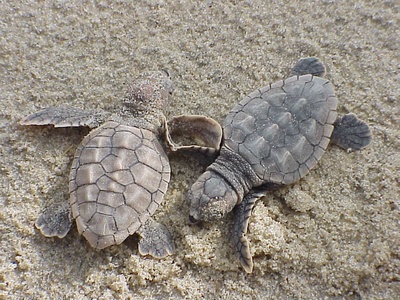
Loggerhead Sea Turtle
This large marine turtle nests on sandy beaches along Albania’s southern Ionian coast. Conservation efforts are crucial to protect their nesting sites from human disturbance and ensure the survival of hatchlings making their first journey to the sea.
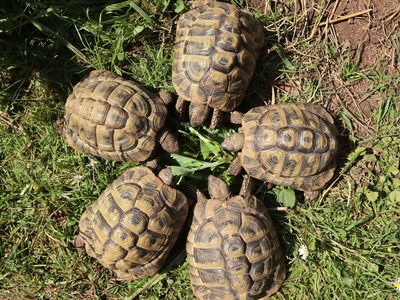
Hermann’s Tortoise
A common land tortoise found in the Mediterranean scrublands and oak forests of coastal and central Albania. It is recognizable by the horny scale on the tip of its tail and is often seen basking in the sun.

Nose-horned Viper
Known for the distinctive horn on its snout, this is Europe’s most venomous snake. It inhabits dry, rocky, sun-exposed hillsides throughout Albania. While shy, its potent venom commands respect and caution.

Balkan Green Lizard
A large, brilliantly colored lizard that can reach up to 45 cm in length. Males display a stunning vibrant green during mating season. It is common in sunny habitats with dense vegetation, such as scrublands and forest edges.
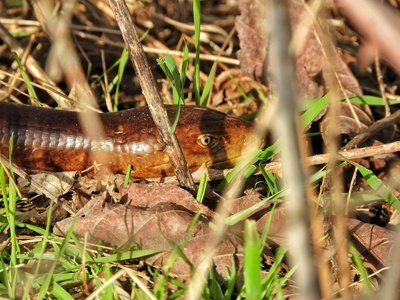
European Glass Lizard
Often mistaken for a snake due to its lack of legs, this is actually a large lizard. It’s found in dry, open habitats across Albania and is harmless. If threatened, it can shed its tail as a defense mechanism.
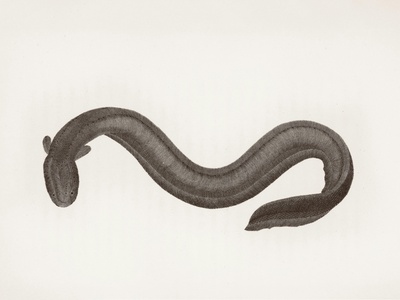
Balkan Whip Snake
A slender, fast-moving, and non-venomous snake found in a wide range of habitats, from rocky slopes to farmlands. It is an active daytime hunter, preying on lizards, small mammals, and large insects.
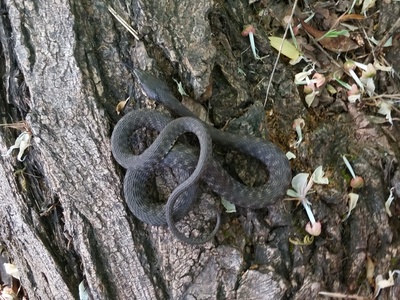
Dice Snake
This semi-aquatic, non-venomous snake is a common sight in and around Albania’s lakes and rivers, including Shkodra and Ohrid. It is an excellent swimmer and primarily feeds on fish, which it hunts underwater.
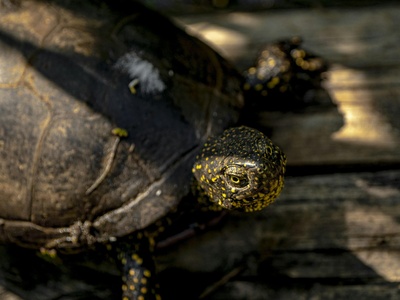
European Pond Turtle
A freshwater turtle found in slow-moving water bodies like ponds, canals, and wetlands across Albania. It is often seen basking on logs or banks and is an omnivore, feeding on insects, amphibians, and aquatic plants.

Dalmatian Algyroides
A small lizard, with males sporting a bright blue throat during breeding season. It’s native to the western Balkans and is commonly seen on old stone walls, rocks, and ruins in coastal and central Albania.
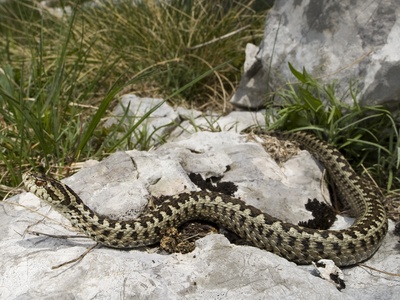
Meadow Viper
One of Europe’s smallest and most threatened vipers, found only in isolated, high-altitude mountain meadows in Albania. It faces threats from habitat loss due to overgrazing and land use changes, making it a key conservation target.

Fire Salamander
This unmistakable amphibian has glossy black skin with vibrant yellow spots, warning predators of its toxicity. It lives in damp, deciduous forests, often near streams, and is most active after rainfall or at night.
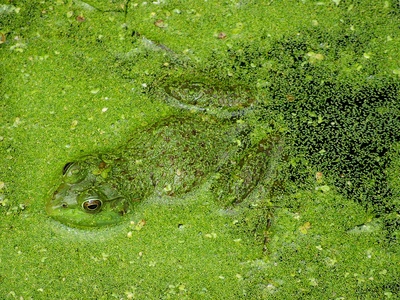
Albanian Water Frog
Endemic to the region, this frog is found primarily in and around Lake Shkodra and nearby wetlands. It faces significant threats from habitat loss and water pollution, making its conservation a high priority for Albanian biodiversity.
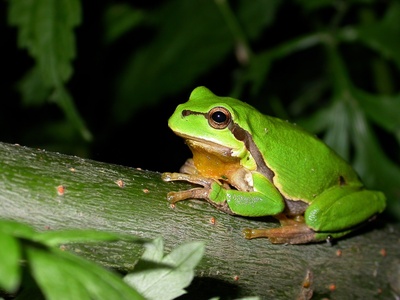
European Tree Frog
A small, bright green frog with a remarkable ability to climb, thanks to adhesive discs on its toes. It lives in bushes and trees near ponds and marshes, and its loud, croaking chorus is a common sound on spring evenings.

Yellow-bellied Toad
A small toad known for its brightly colored underside, which it flashes to deter predators. It inhabits puddles, ponds, and slow-moving streams in hilly and mountainous regions of Albania, often in forested areas.

Agile Frog
Named for its powerful long legs, which allow it to leap impressive distances. This slender, brownish frog is found in damp forests, marshes, and meadows across much of Albania, often near ponds where it breeds.
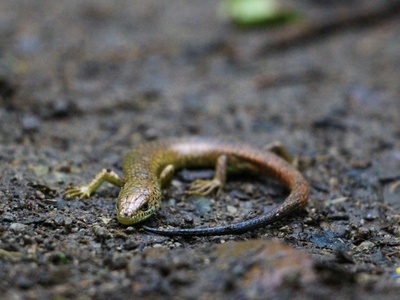
Smooth Newt
A common and widespread newt, found in ponds, ditches, and other still waters during its spring breeding season. Males develop a wavy crest along their back to attract females. They spend the rest of the year on land.

Ohrid Trout
A unique trout species found only in Lake Ohrid, a UNESCO World Heritage site. Prized for its flavor, it is severely threatened by overfishing and habitat degradation, prompting strict conservation measures.

European Eel
This mysterious, long-lived fish begins its life in the Sargasso Sea before migrating to Albanian rivers and lagoons to mature. Its populations have crashed due to barriers to migration, overfishing, and pollution.
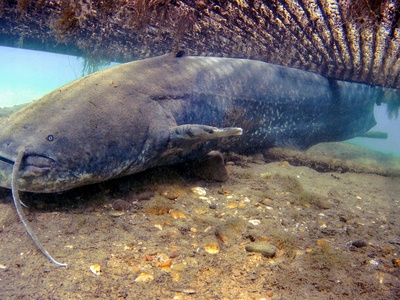
Wels Catfish
Europe’s largest freshwater fish, a true giant that can exceed 2.5 meters in length. It lurks in the deep, murky waters of large lakes like Shkodra and major rivers, where it is a powerful apex predator.
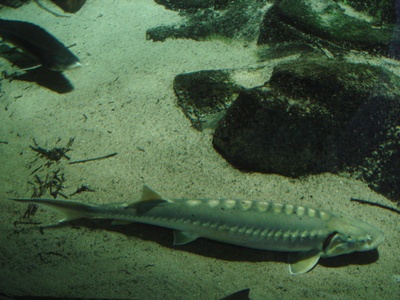
Adriatic Sturgeon
Historically found in the Drin and Buna rivers, this ancient fish is on the brink of extinction in the wild. It is a slow-growing, bottom-dwelling species that has suffered immensely from dam construction and overfishing.
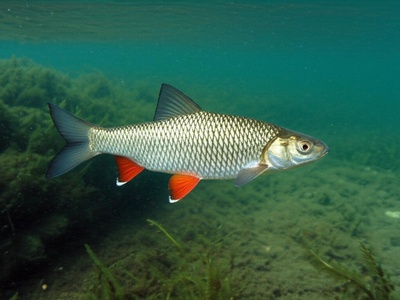
Shkodra Roach
A fish species native to the Drin-Buna river system, including Lake Shkodra. It is an important part of the local freshwater ecosystem and is adapted to the specific conditions of this large Balkan lake.
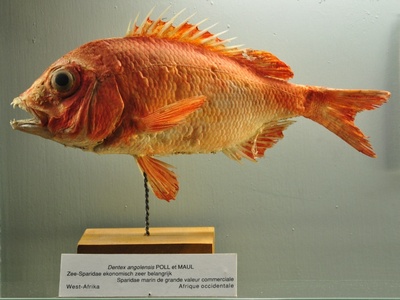
Dentex
A powerful predatory fish found in the rocky coastal waters of the Ionian and Adriatic Seas. Recognized by its strong canine teeth, it is a prized catch for anglers and a key component of the marine food web.

Gilt-head Bream
A popular and highly valued fish in Mediterranean cuisine, found in Albania’s coastal waters and lagoons. It is easily identified by the golden bar between its eyes and is often farmed in aquaculture facilities.
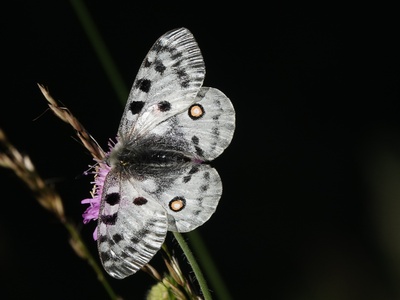
Apollo Butterfly
A large, beautiful white butterfly with distinctive red eye-spots on its hindwings. It is found in high-altitude meadows in the Albanian Alps and is protected due to its sensitivity to habitat changes and climate change.
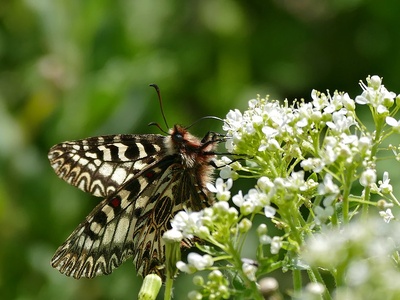
Southern Festoon
A beautiful and intricate butterfly with yellow, red, and black markings. It flies in early spring in warm, scrubby, and often rocky areas across Albania. Its caterpillars feed exclusively on birthwort plants.
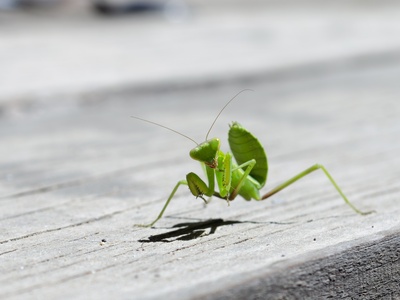
European Mantis
This iconic predatory insect is common in sunny grasslands and gardens across Albania. A patient ambush predator, it uses its powerful forelegs to snatch prey like flies and grasshoppers with lightning speed.
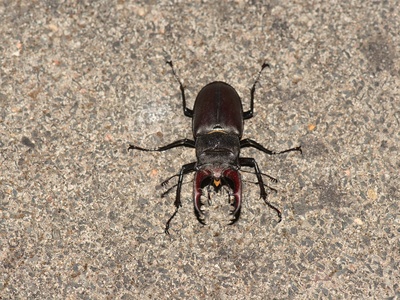
Stag Beetle
One of Europe’s largest and most spectacular beetles, named for the male’s large mandibles that resemble a stag’s antlers. Its larvae depend on decaying wood, making it vulnerable to the removal of old trees from forests.
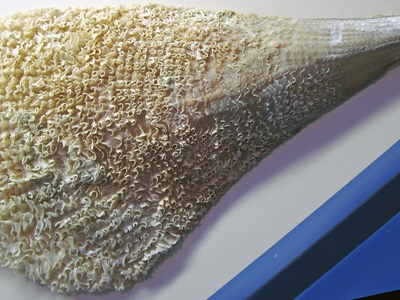
Noble Pen Shell
The largest bivalve in the Mediterranean, this giant fan mussel can grow up to 1.2 meters long. It lives partially buried in seagrass beds, but its population has been devastated by a parasite, making it critically endangered.

Common Octopus
A highly intelligent mollusk found in the rocky coastal waters of the Ionian and Adriatic seas. It is a master of camouflage, able to change its skin color and texture instantly to blend in with its surroundings or communicate.
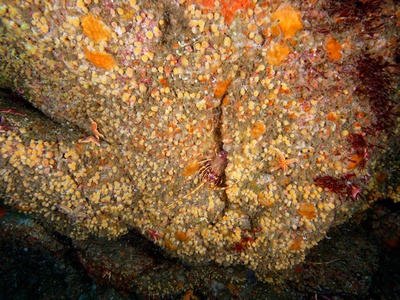
Mediterranean Spiny Lobster
A large, nocturnal crustacean lacking large claws but possessing long, spiny antennae. It inhabits rocky crevices and reefs in the Ionian and Adriatic Seas and is a highly sought-after delicacy, leading to overfishing concerns.
